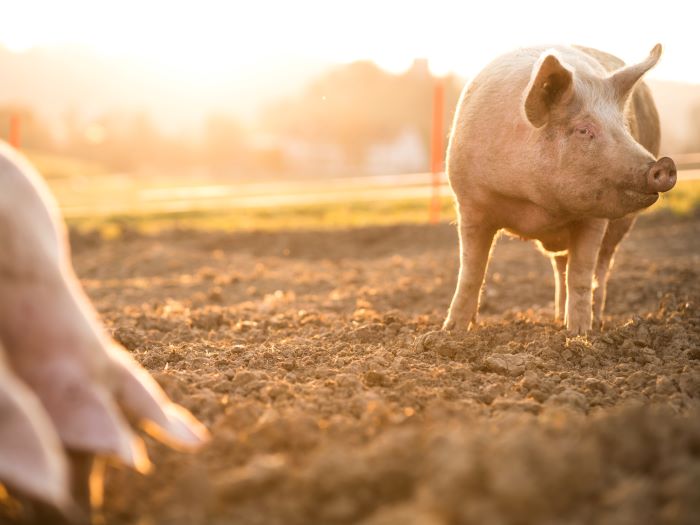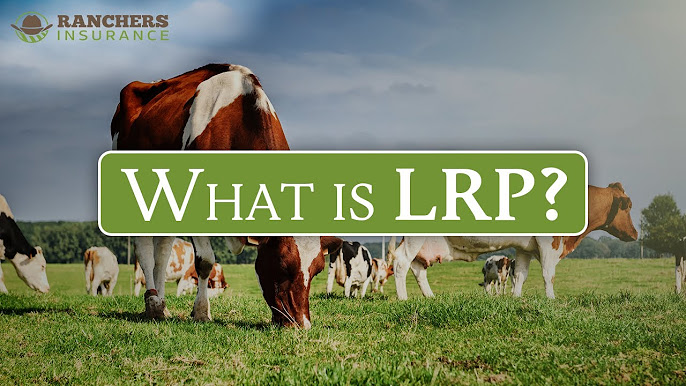Unlocking Development Potential: Bagley Risk Management Approaches
Unlocking Development Potential: Bagley Risk Management Approaches
Blog Article
Understanding Livestock Threat Protection (LRP) Insurance Coverage: A Comprehensive Overview
Browsing the world of livestock threat defense (LRP) insurance policy can be a complicated venture for numerous in the agricultural sector. This kind of insurance policy offers a safety and security net versus market fluctuations and unforeseen circumstances that might impact livestock producers. By understanding the ins and outs of LRP insurance, manufacturers can make informed choices that might guard their operations from financial threats. From exactly how LRP insurance policy operates to the numerous insurance coverage choices available, there is much to reveal in this comprehensive overview that could possibly shape the means animals manufacturers approach risk monitoring in their organizations.

How LRP Insurance Policy Functions
Sometimes, understanding the auto mechanics of Livestock Risk Defense (LRP) insurance coverage can be complicated, however damaging down exactly how it functions can supply clarity for farmers and ranchers. LRP insurance coverage is a danger monitoring tool developed to shield livestock manufacturers against unexpected price decreases. It's vital to keep in mind that LRP insurance is not a revenue warranty; instead, it concentrates only on cost threat security.
Qualification and Insurance Coverage Options

When it pertains to coverage alternatives, LRP insurance coverage supplies manufacturers the versatility to select the protection level, coverage period, and recommendations that best fit their danger monitoring demands. Coverage levels commonly range from 70% to 100% of the anticipated ending value of the insured animals. Producers can likewise choose coverage periods that line up with their manufacturing cycle, whether they are guaranteeing feeder livestock, fed livestock, swine, or lamb. Endorsements such as price threat defense can additionally personalize insurance coverage to shield versus damaging market fluctuations. By recognizing the eligibility standards and protection options offered, livestock manufacturers can make educated choices to manage threat properly.
Benefits And Drawbacks of LRP Insurance Coverage
When reviewing Animals Threat Defense (LRP) insurance coverage, it is vital for animals manufacturers to evaluate the advantages and negative aspects inherent in this danger administration tool.

One of the primary advantages of LRP insurance policy is its capacity to give protection versus a decrease in livestock costs. Additionally, LRP insurance policy provides a level of flexibility, allowing producers to personalize coverage degrees and policy durations to fit their certain needs.
One constraint of LRP insurance coverage is that it does not protect against all kinds of risks, such as condition outbreaks or natural calamities. It is critical for producers to very carefully evaluate their individual risk exposure and economic situation to identify if LRP insurance coverage is the right danger monitoring tool for their operation.
Comprehending LRP Insurance Policy Premiums
Tips for Taking Full Advantage Of LRP Conveniences
Making best use of the benefits of Livestock Danger Protection (LRP) insurance requires critical planning and positive danger monitoring - Bagley Risk Management. To make the most of your LRP coverage, think about the following ideas:
Consistently Evaluate Market Problems: Keep educated concerning market patterns and price changes in the livestock market. By keeping track of these elements, you can make educated decisions about when to purchase LRP protection to secure against prospective losses.
Set Realistic Coverage Degrees: When choosing insurance coverage degrees, consider your manufacturing costs, market price of animals, and prospective risks - Bagley Risk Management. Establishing sensible coverage degrees guarantees that you are appropriately shielded without paying too much for unnecessary insurance
Diversify Your Protection: Rather than relying only on LRP insurance, take into consideration read this expanding your threat administration strategies. Incorporating LRP with various other threat management tools such as futures agreements or options can give extensive coverage versus market uncertainties.
Review and Readjust Coverage Frequently: As market conditions alter, regularly assess your LRP protection to ensure it lines up with your existing threat direct exposure. Changing coverage degrees and timing of purchases can help maximize your risk security technique. By following these suggestions, you can maximize the benefits of LRP insurance and safeguard your animals procedure versus unpredicted dangers.
Final Thought
In final thought, animals danger important site defense (LRP) insurance policy is a beneficial tool for farmers to take care of the economic risks connected with their animals procedures. By comprehending just how LRP works, eligibility and protection choices, along with the pros and cons of this insurance policy, farmers can make informed choices to safeguard their incomes. By thoroughly taking into consideration LRP costs and implementing techniques to make the most of advantages, farmers can mitigate potential losses and make sure the sustainability of their operations.
Animals producers interested in getting Animals Risk Protection (LRP) insurance policy can explore a variety of qualification requirements and insurance coverage alternatives customized to their certain animals operations.When it comes to coverage alternatives, LRP insurance policy uses manufacturers the flexibility to choose the insurance coverage level, insurance coverage duration, and endorsements that best fit their risk administration needs.To realize the complexities of Animals Risk Defense (LRP) insurance policy totally, understanding the elements influencing LRP insurance coverage browse this site costs is important. LRP insurance premiums are determined by numerous aspects, including the coverage level chosen, the anticipated rate of animals at the end of the insurance coverage period, the type of livestock being insured, and the size of the coverage duration.Review and Readjust Coverage Routinely: As market conditions alter, occasionally evaluate your LRP coverage to ensure it straightens with your present danger direct exposure.
Report this page